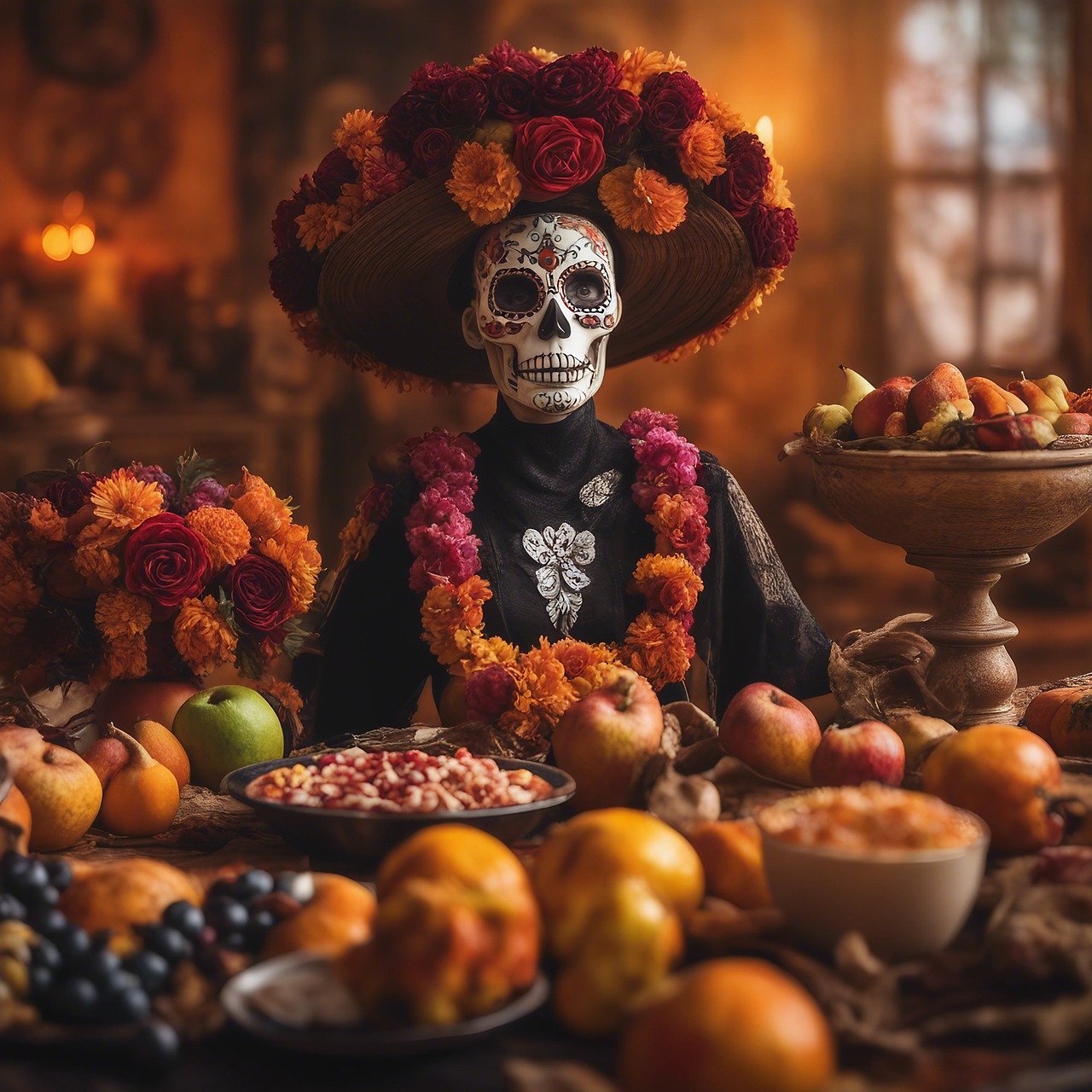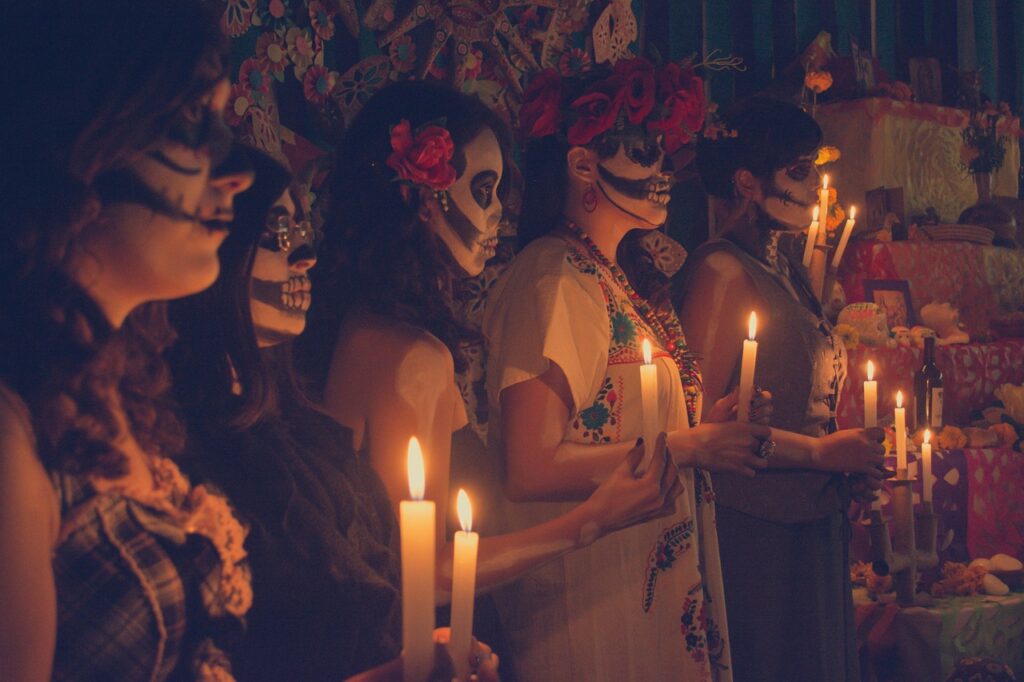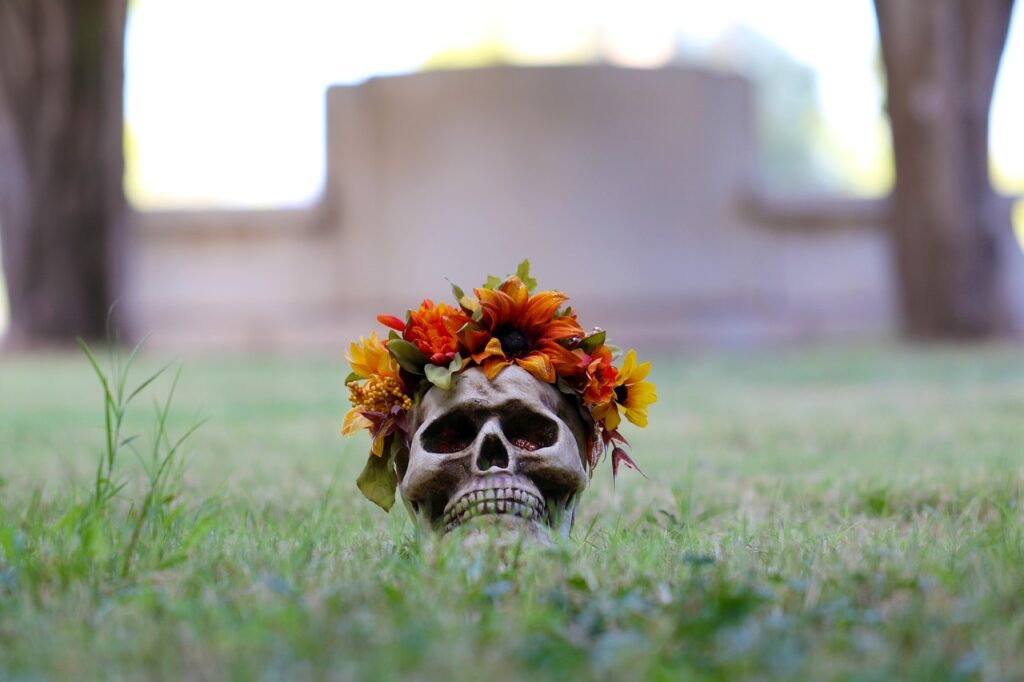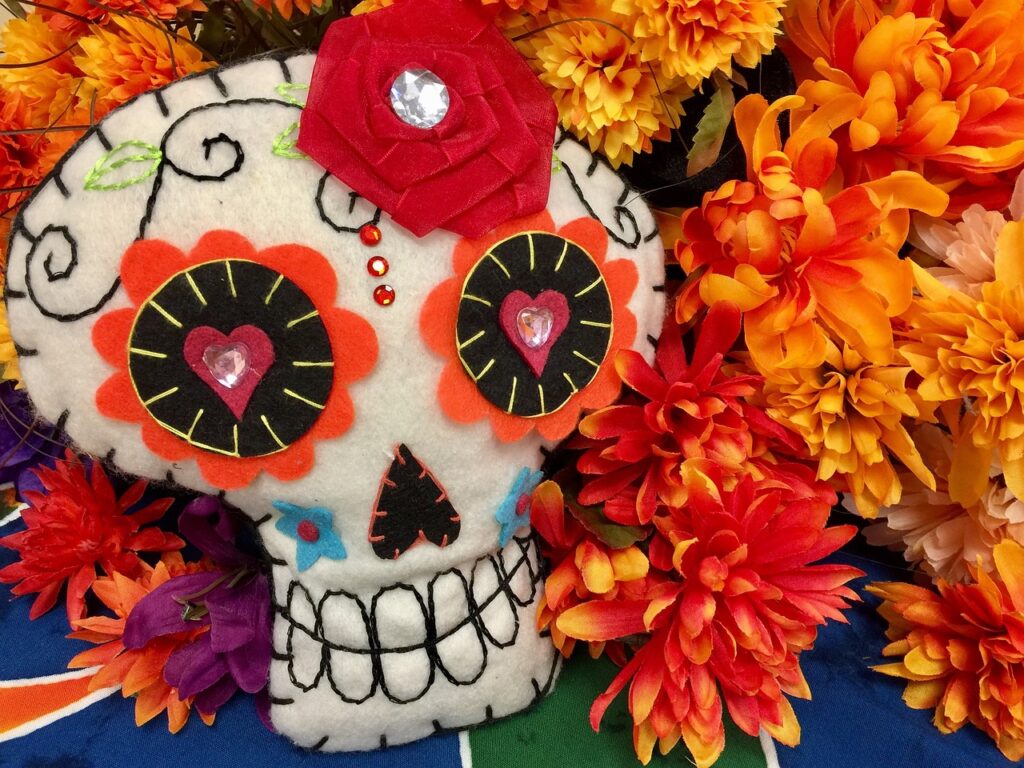
Image by Celso_Art_Online from Pixabay
Dia de los Muertos (Day of the Dead) is more than a holiday—it’s a joyful, colorful homage to ancestors and loved ones who have passed. Celebrated primarily in Mexico and parts of the United States like Texas, this tradition blends ancient indigenous beliefs with modern customs. Each element is rich in meaning, making it a time not of mourning, but of remembrance and celebration.
The Origins of Dia de los Muertos
The holiday has roots in ancient indigenous cultures, particularly the Aztec, Maya, and Toltec civilizations, where death was viewed as a part of the cycle of life. These groups celebrated their dead for thousands of years before Spanish colonization. When Spanish missionaries arrived in the 16th century, they brought with them Catholic traditions, leading to the fusion of indigenous practices with All Saints’ Day and All Souls’ Day. Over time, Dia de los Muertos evolved into the unique celebration we see today.

Image by Ernesto Rodríguez from Pixabay
Traditions in Mexico
In Mexico, Dia de los Muertos is celebrated on November 1 and 2, with each day having distinct themes. November 1, known as Dia de los Inocentes or Dia de los Angelitos, is dedicated to children who have passed. November 2 is for adults and known as Dia de los Muertos or Dia de los Difuntos.
One of the most iconic aspects of the holiday is the creation of ofrendas (altars). Families build these in their homes or at gravesites, decorating them with vibrant marigolds (cempasúchil), candles, and papel picado (intricate paper cutouts). Each ofrenda holds photos of the departed, mementos, and items they enjoyed in life, from their favorite foods and drinks to small personal items.
In some areas of Mexico, especially in states like Oaxaca and Michoacán, communities come together for large public celebrations, including parades, music, and traditional dances. People paint their faces like calaveras (skulls) to mimic La Catrina, the elegant skeleton figure that has become synonymous with Dia de los Muertos, symbolizing death’s impartiality to class and social status.

Image by Joey Velasquez from Pixabay
Dia de los Muertos in Texas
In Texas, Dia de los Muertos has taken on a unique regional flair. Texas has long been influenced by both Mexican and Indigenous cultures, and the holiday has grown in popularity as a vibrant, cross-cultural event celebrated by people of many backgrounds.
Texas communities, especially in cities like San Antonio, Austin, and El Paso, host public altars and festivals, allowing locals to honor loved ones and participate in the culture. At these festivals, you’ll often find live music, traditional folk dancers, and art installations celebrating the legacy of Dia de los Muertos. Public ofrendas invite the community to contribute photos, messages, and small trinkets in honor of the deceased.
Texas artisans often blend Dia de los Muertos traditions with local symbols, such as incorporating Texan wildflowers with traditional marigolds on altars. In larger cities, celebrations may include carne asada, tamales, and pan de muerto, mixing Texas flavors with classic Mexican treats. Some people even use Dia de los Muertos to honor fallen soldiers, a reflection of the state’s deep ties to military history.

Image by Anne Karakash from Pixabay
Universal Symbols: Calaveras, Cempasúchil, and La Catrina
Across both Texas and Mexico, certain symbols hold universal meaning. Calaveras, or skulls, are often created as sugar or chocolate skulls, decorated brightly and symbolizing both the sweetness and inevitability of life and death. La Catrina, an elegant female skeleton figure created by Mexican artist José Guadalupe Posada, reminds us that no matter our status in life, death is the ultimate equalizer.
The marigold is another unifying element. Known as the flower of the dead, marigolds’ vibrant orange and yellow colors and strong fragrances are believed to guide spirits back to the world of the living.
Interesting Read: The Mysterious Origins of Halloween
An Evolving Tradition
Dia de los Muertos continues to grow and evolve, especially in Texas. While it’s steeped in indigenous and Mexican heritage, it has become an inclusive holiday that brings people together to honor loved ones. Whether through crafting an ofrenda at home or attending a community event, people embrace the holiday in ways that reflect their personal or family histories.
This unique blend of ritual and celebration is what makes Dia de los Muertos such a remarkable tradition—a reminder that, even in death, there is beauty, memory, and love.
Lisa Crow contributed to this article. She is a true crime junkie and lifestyle blogger based in Waco, Texas. Lisa is the Head of Content at Gigi’s Ramblings and Southern Bred True Crime Junkie. She spends her free time traveling when she can and making memories with her large family which consists of six children and fifteen grandchildren.